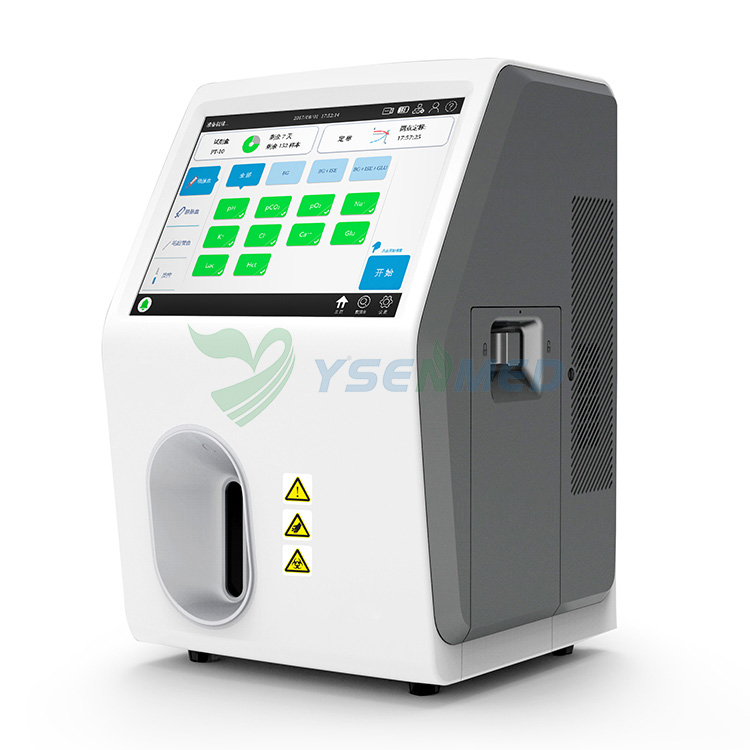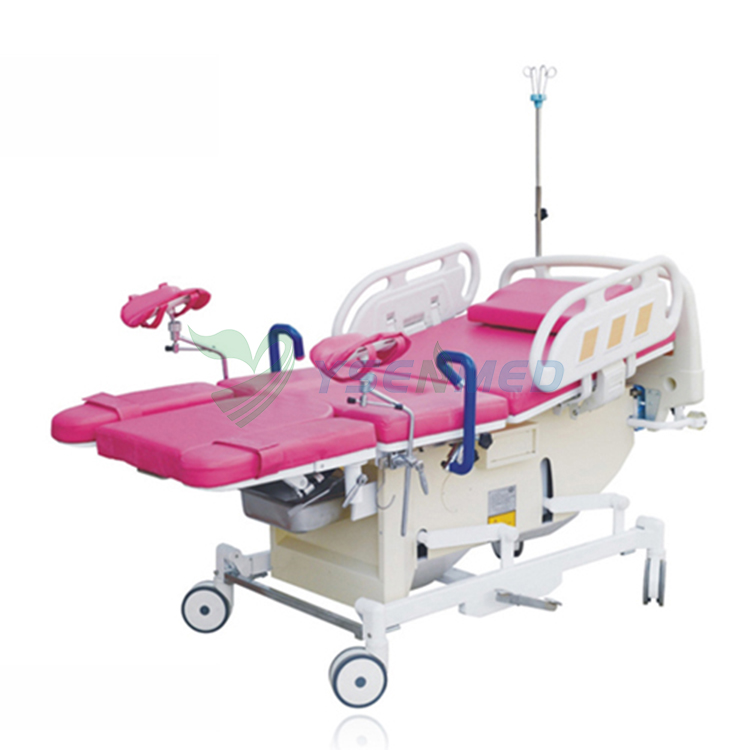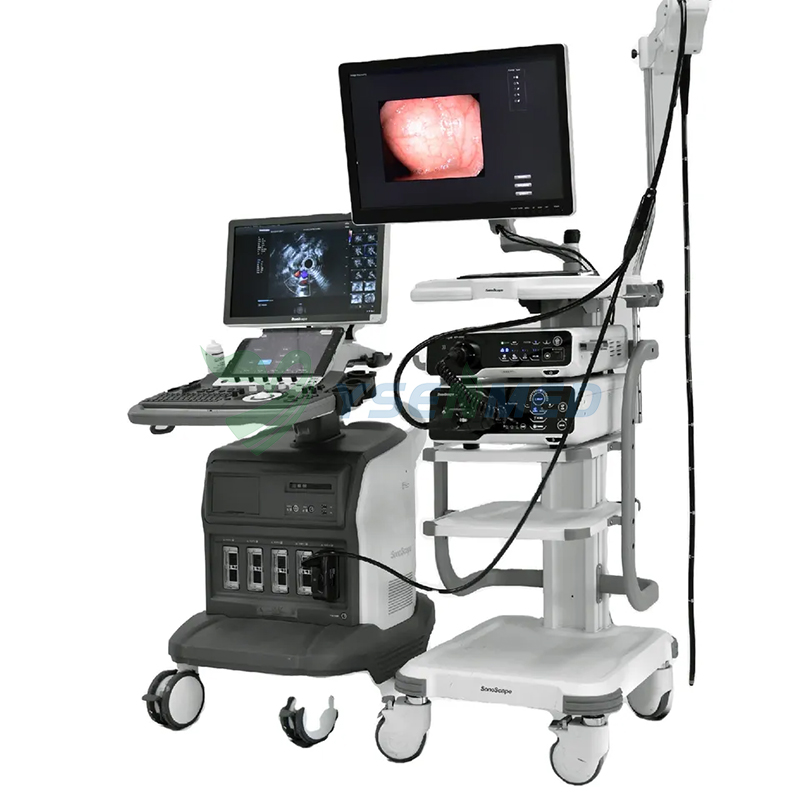The anesthesia machine sends the anesthetic into the alveoli of the patient through a mechanical circuit, forming a partial pressure of the anesthetic gas, which diffuses into the blood, and directly inhibits the central nervous system, thereby producing the effect of general anesthesia. The anesthesia machine is a semi-open anesthesia device.It is specifically composed of anesthesia evaporation tank, glide meter, folding bellows ventilator, respiratory circuit(including suction and expiration one-way valve and manual air bag), corrugated pipeline and other components.
The so-called anesthesia refers to the method of temporarily losing all or part of the organism's consciousness in order to perform surgical treatment. There are many methods of anesthesia, such as acupuncture anesthesia, injection anesthesia and inhalation anesthesia. The method of general anesthesia used in hospitals is still based on inhalation anesthesia. An anesthesia machine is an instrument for general anesthesia using inhalation anesthesia.
Modern anesthesia machines are developing towards an intelligent and integrated system, with coordinated, flexible and reliable combinations of components, compact and reasonable structure, clear and friendly user interface, and convenient and quick operation. Electronically managed fueloline transport system, integrated electronically managed anesthesia ventilator, included respiratory circuit, included fuelolinetracking system, excessive and occasional micro-go with the drift anesthesia techniques are the fine aggregate of contemporary-day anesthesia machines. The new generation of anesthesia workstation will be expanded and integrated into the entire medical system, which can be systematically networked with hospital equipment, communicate, define, adjust the anesthesia process and records, evaluate The impact of anesthesia, enhance the nice of affected person care, and create a terrific operating environment for According to the structural principle of modern anesthesia machine, it can be divided into: gas supply and delivery system, anesthesia gas volatilization tank, breathing circuit, anesthesia ventilator, safety monitoring system and residual gas removal system.

Types of Anesthesia Machines
(1) Air anesthesia machine
The air anesthesia machine is a semi-open anesthesia device. It mainly consists of liquid medicine tank, ether regulating switch, folding bellows, suction and expiration one-way valve and bellows. The device is light and applicable, can directly use air and oxygen as carrier gas, can perform assisted breathing and controlled breathing, and meets various surgical requirements.
Its working principle is: after the patient completes anesthesia induction, connect the air anesthesia machine with a closed mask or endotracheal tube. When inhaling, the anesthesia mixture gas enters the patient's body through the opened inspiratory valve; when exhaling, the expiratory valve opens, and at the same time the inspiratory valve closes to discharge the exhaled gas. When using assisted or controlled breathing, a collapsible bellows can be utilized. Press down when inhaling and pull up when exhaling to ensure that the patient has sufficient ventilation. At the same time, according to actual needs, adjust the ether switch to maintain a stable level of anesthesia.
The disadvantage of this device is that the concentration of ether is low, it can only be used as anesthesia maintenance, and the consumption of ether is large, which is easy to cause environmental pollution.
(2) DC anesthesia machine
The DC anesthesia machine is composed of high-pressure oxygen, a pressure reducer, a flow meter, and an anesthetic liquid evaporator. The device can only provide oxygen and adjust the anesthetic concentration of the inhaled gas, and other devices must be connected in series with the output site to perform anesthesia.
(3) Closed cycle anesthesia machine
The device supplies the patient with low-flow anesthesia mixed gas through the one-way movement of the escape valve (door). The exhaled gas enters the CO2 absorber through the exhalation valve for reuse.Its shape is specially composed of oxygen deliver and nitrous oxide device, fueloline flowmeter, evaporator, CO2 absorber; one-way valve, breathing tube, outgas valve, air storage bag, etc.
Modern anesthesia machines are also equipped with ventilator airway internal pressure, expiratory flow, end-tidal CO2 concentration, inhaled anesthetic concentration, oxygen concentration monitor, hypoxia alarm and hypoxia-nitrous oxide automatic protection device.
Structural principle editing broadcast
Brief Description
Since Ronning first applied ether anesthesia in 1846, inhalation anesthesia has been perfected day by day. The development of modern pharmacology, the advancement of science and technology, especially the application of computer technology, have greatly improved the level of modern inhalation anesthesia. Inhalational anesthesia is easy to control, safe and effective. It is the first choice when performing surgery in the current hospital.
The so-called anesthesia refers to the method of temporarily losing all or part of the organism's consciousness in order to perform surgical treatment. There are many methods of anesthesia, such as acupuncture anesthesia, injection anesthesia and inhalation anesthesia. The method of general anesthesia used in hospitals is still based on inhalation anesthesia. An anesthesia machine is an instrument for general anesthesia using inhalation anesthesia.
Modern anesthesia machines are developing towards an intelligent and integrated system, with coordinated, flexible and reliable combinations of components, compact and reasonable structure, clear and friendly user interface, and convenient and quick operation. Electronically controlled gas delivery system, built-in electronically controlled anesthesia ventilator, integrated breathing circuit, integrated gas monitoring system, high and low micro-flow anesthesia methods are the best combination of modern anesthesia machines. The new generation of anesthesia workstation will be expanded and integrated into the entire medical system, which can be systematically networked with hospital equipment, communicate, define, adjust the anesthesia process and records, evaluate the effect of anesthesia, improve the quality of patient care, and create a good working atmosphere for clinicians. According to the structural principle of modern anesthesia machine, it can be divided into: gas supply and delivery system, anesthesia gas volatilization tank, breathing circuit, anesthesia ventilator, safety monitoring system and residual gas removal system.
Gas supply Delivery System
The gas supply system includes: compressed gas cylinder (or central gas source), one-way valve, overflow valve, filter, pressure gauge, gas pressure regulator, flow meter and N2O-O2 proportional interlock control device, laughing-oxygen cut-off valve etc.
The anesthesia machine must be equipped with flow meters for various gas sources, and the units of the flow meters are L/min and mL/min (or flow tubes lower than 2L/min) with two reading flow tubes to facilitate the implementation of low-flow anesthesia. At the same time, it must be equipped with an N2O-O2 proportional interlocking control device to ensure that the oxygen concentration of the output anesthetic gas is not lower than 25%; when the oxygen supply is insufficient or interrupted, the laughing gas supply is automatically cut off. The common N2O-O2 proportional interlock control device and the oxygen-oxygen cut-off valve are mechanical devices, so be careful not to fail. During daily use, you must pay attention to the ratio of O2 and N2O, check whether the flow meter is leaking, and rely on anesthesia machine or other The monitoring system monitors the concentration of O2 and N2O in the breathing circuit, and can more accurately measure the current operation of the anesthesia machine. Many modern anesthesia machines have 55L/min oxygen bypass, which can quickly and directly enter the breathing circuit through the emergency interface, which greatly facilitates the oxygen supply operation of clinical anesthetists.
Anesthetic Gas Vaporizer
The vaporizer (also known as: anesthesia evaporator, evaporator) is an important part of the anesthesia machine. Its quality not only marks the manufacturing level of the anesthesia machine, but also relates to the effect and success of inhalation anesthesia, directly related to the safety of the patient.
The basic principle of the volatilizer is to use the changes in the temperature and heat source of the surrounding environment to turn the anesthetic drug into vaporized gas, and through a certain amount of carrier gas, part of the gas will carry away the saturated anesthetic gas and become an airflow with a certain concentration of anesthetic vapor , directly into the anesthesia circuit.
Breathing Circuit
The breathing circuit is a combined gas circuit device that connects the anesthesia machine to the patient, delivers the anesthesia mixture gas to the patient, and returns the exhaled gas of the patient, so as to realize the normal exchange of oxygen and carbon dioxide. It mainly consists of breathing pipes, CO2 absorption tanks, breathing valves, air storage bags, masks, machine-manual valves, exhaust valves, pressure limiting valves, development/semi-opening valves, etc. The directional circulation of the gas is formed by the valve and the pipeline, and the soda lime in the CO2 absorption tank is used to absorb CO2 and water to supply the patient with fresh gas. Machine control - manual control valve is convenient for users to choose manual control or machine control through anesthesia ventilator; semi-open valve, pressure limiting valve, etc. can make the breathing circuit flexible control, pressure limit, and facilitate spontaneous breathing.
Anesthesia Ventilator
The anesthesia ventilator has become an essential part of the anesthesia machine. Due to the realization of mechanical ventilation in inhalation anesthesia, it has developed rapidly in recent years, and has complete functions and miniaturization.
The drives of the anesthesia ventilator include pneumatic, pneumatic electric control and electric. Pneumatic respirators are relatively old-fashioned products, purely using compressed oxygen as the power source, and consume a large amount of oxygen, so they are obsolete respirators; most of the newer anesthesia machines supporting anesthesia ventilators are oxygen-driven and electronically controlled; recently The anesthesia ventilator is a built-in electric and electronically controlled ventilator that does not need a driver. It can be ventilated by the atmosphere when the gas is cut off to ensure the safety of the patient; the more typical anesthesia ventilator is a pneumatic and electronically controlled ventilator. The inside and outside of the foldable bag are two sets of air circuits, which drive the air to compress the foldable bag and drive the anesthetic gas in the bag to enter the patient, forming a two-loop system of driving gas source and anesthesia gas flow.
Safety Monitoring System
Modern anesthesia machines have safety monitoring systems. The system includes: insufficient oxygen supply alarm, insufficient oxygen supply/interruption nitrous oxide cut-off device, volume and concentration monitoring part and fault alarm. The monitoring part mainly includes: inhaled oxygen concentration, exhaled tidal volume, airway pressure, minute ventilation, end-tidal CO2 concentration, and anesthetic gas concentration. Microcomputer is used to process and display various data, and it is equipped with an alarm system, especially the functions of breathing, circulation, nerve and muscle monitoring can be realized, which greatly improves the quality of clinical anesthesia and the safety of patients, and improves the success rate of surgery .
Residual Gas Removal System
The residual gas removal system is to collect the excess residual gas in the anesthesia machine and the exhaust gas exhaled by the patient, and discharge it out of the operating room through the pipeline to avoid air pollution in the operating room. It mainly includes the waste gas collection and discharge device, which is composed of: regulating valve, discharge valve, vacuum generator, pipes and connectors, etc.
Type
Inhalation anesthesia is to send anesthesia (agent) into the alveoli of the patient through a mechanical circuit, forming a partial pressure of the anesthetic gas, which diffuses into the blood, and directly inhibits the central nervous system, thereby producing the effect of general anesthesia.
Air Anesthesia Machine
The air anesthesia machine is a semi-open anesthesia device. It mainly consists of liquid medicine tank, ether regulating switch, folding bellows, suction and expiration one-way valve and bellows. The device is light and applicable, can directly use air and oxygen as carrier gas, can perform assisted breathing and controlled breathing, and meets various surgical requirements.





